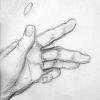Recently game graphics at the high end have become so good that quality isn't a problem, the graphics approach photo realism in a lot of cases. Now what I was thinking is that perhaps in some of the top quality recent games, the art quality exceeds what would be appropriate for the design. The reason is, that if every scene is perfectly decorated and textured to meet the art teams aesthetic goals, then perhaps it becomes difficult to make a scene stand out in terms of visual appeal, so I am describing a kind of contrast between beautiful, mundane, and just plain ugly. I think a lot of games are designed with the notion that reality sets the mundane threshold, and games should be out of the mundane all the time ... I am inclined to disagree because several games had the effect of looking normal after a certain amount of time (Mass effect, Rage, Zelda windwaker, Crysis, Gears of war) to the extent that I was really not impressed when I finally reached the nuclear power core, or end of game boss, or any special storyline features.
So in my own designs I consider setting up a quality contrast, creating an in-game mundane look to use for non-extraordinary world features, and yet on the other hand I wonder of it isn't better to purchase and own a visual orgasm of artistic quality? Perhaps good ideas are under going constant recycling and reality no longer has anything to offer but a larger set of bills and expenses, and creativity will simply be categorizable into sets of known and pre-used elements... but of course the average game is still regarded as having low literary quality, and the directing isn't really appreciated by older generations. Perhaps I should close my eyes and wait until the excitement has died down before looking critically at the result, with or without the perfectly dented trash can, artfully shaped corrugated iron and rubble. I appreciate that setting a mundane might even save money, but the real big deal is whether to follow a rule of escapism in dealing with game content, or the immersive which requires the quality contrast.







